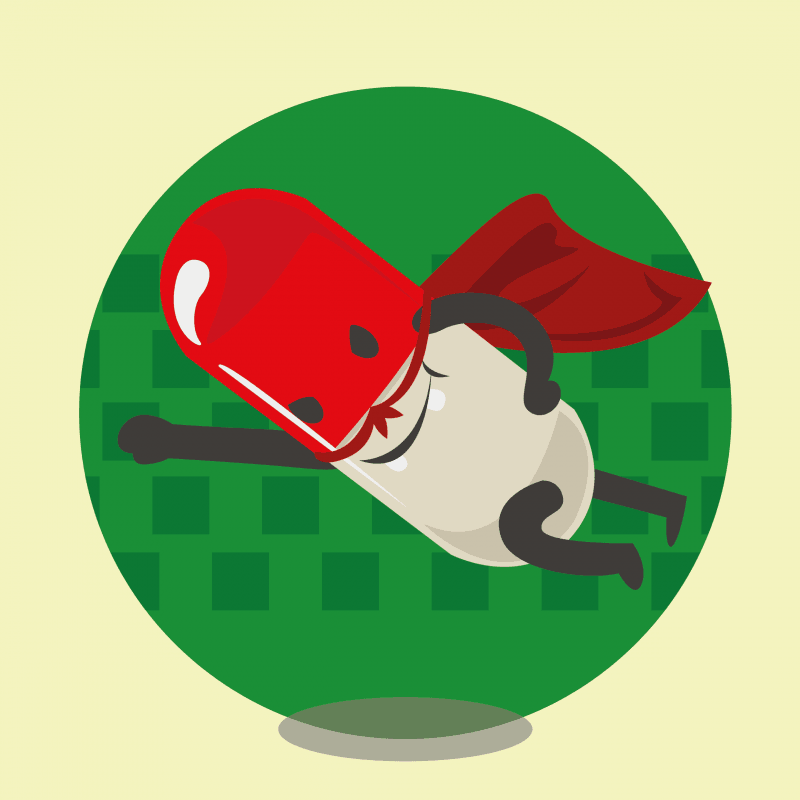
What if the difference between failing the USMLE and scoring 260+ wasn’t about how smart you are—but how you use UWorld? It may sound too good to be true, but I’ve seen it happen repeatedly, including someone who failed Step 1 and scored a 262 on their NBME in under two months before passing their retake.
The secret? Understanding that it’s not about what resources you use, it’s about how you use them. In this article, we’ll reveal the six critical UWorld mistakes that separate struggling students from top scorers, and more importantly, how to fix them.
Mistake #1: Repeating UWorld Without Strategy
Here’s something that might surprise you: the advice to repeat UWorld multiple times is outdated, and following it could actually hurt your score.
This recommendation originated years ago when UWorld’s question bank was significantly smaller. What most students don’t realize is that UWorld has dramatically expanded its content in recent years, but perhaps not for the reasons you’d expect.
Consider these numbers: Step 1 questions increased from 2,519 in January 2019 to 3,796 by October 2022, a staggering 50% increase. Step 2 question bank saw an even more dramatic 77% expansion, growing from about 2,300 to 4,077 questions.
You might think this growth reflects increased exam complexity, but the timing tells a different story. AMBOSS entered the U.S. market in spring 2017 with aggressive promotions and free subscriptions. Just one year later, UWorld began its dramatic expansion. This wasn’t coincidence, it was likely a business decision to crowd out competition and justify higher prices.
Why does this matter for your preparation? If you’re using effective learning strategies like spaced repetition with Anki, you may not need multiple passes through UWorld at all. When you truly understand concepts the first time and use spaced repetition to retain them, repeating thousands of questions becomes an expensive waste of time.
Mistake #2: Chasing Vanity Metrics Like “Questions Per Day”
“Top scorers do 100+ UWorld questions a day, so I should too.” That might sound like a smart plan, but it misses one key point: doing lots of questions doesn’t build a strong foundation—it’s what students with a strong foundation can do.
Think of it like basketball. NBA players who take the most shots earn the highest salaries. But if you started taking more shots tomorrow, would your paycheck increase? Of course not. The players trusted with the most shots have the most skill, and skilled players command higher salaries.
The same principle applies to UWorld. Students with strong foundations can effectively process 80-100 questions daily because they already understand the core concepts. They’re practicing application, not learning basics.
The key is matching your pace to your current level. If you’re still building foundational knowledge, slow down. Master concepts thoroughly before chasing volume metrics. Quality beats quantity every time, especially early in your preparation. For more on this, see the full UWorld strategy breakdown.
Mistake #3: Thinking Every Mistake Is a Knowledge Problem
Medical school exams usually focus on simple recall. Since professors aren’t paid, promoted, or trained based on how well they teach, they often stick to straightforward questions. For them, it’s more like an ungraded assignment, so they tend to keep things easy.
The USMLE operates differently. These exams test interpretation and application, not just recall. This creates entirely new ways to get questions wrong, even when you know the material perfectly.
Here’s a real example: A student who was focused on pediatrics missed a question about Klinefelter syndrome. She actually knew the condition well but ruled out the right answer just because the patient wasn’t described as tall. She thought, “Klinefelter patients are usually tall, so this must be wrong.” But the test writers had added that detail on purpose to see if she could recognize the condition even when it didn’t follow the classic pattern.
This wasn’t a problem with her knowledge. It was an issue with how she interpreted the question. She focused too much on one missing “classic” sign and ignored the other clues that pointed to the right answer.
When you review questions you got wrong, try to figure out what kind of mistake you made. Was it a factual mistake because you didn’t know the information? Was it an interpretive mistake because you misunderstood how to apply what you knew? Or was it a procedural mistake because you misread the question or misunderstood what it was asking? Knowing the type of mistake helps you decide if you need to review the material more or improve your test-taking skills.
Mistake #4: Reading the Last Sentence First
“Read the last sentence first to save time” ranks among the most popular but misguided USMLE advice.
Unlike the SAT or even the MCAT where this strategy might work, Step 1 and Step 2 questions require clinical reasoning. Most of them follow a two-step approach: first, identify the condition or scenario, then apply your medical knowledge to answer the question.
Knowing you need to identify lab value changes (the second step) doesn’t help if you can’t recognize the underlying condition (the first step). Whether it’s about arrows pointing up or down for a myocardial infarction, heart failure, or pulmonary embolism, you still need to work through the clinical presentation systematically.
Yes, perhaps one or two questions per block could be answered by reading only the last sentence. But is disrupting your rhythm for every question worth catching these rare exceptions? Most students under exam pressure will read the entire vignette anyway, they’ve just added an extra step that fragments their thinking.
Instead of treating each detail in the vignette separately, try to connect them. For example, if a patient has chest pain and also happens to be tall and thin, don’t think of those as random facts. Ask yourself how they might be related. This kind of thinking—like recognizing that a tall, thin person with chest pain could have a spontaneous pneumothorax—is the type of clinical reasoning these exams are really testing.
Mistake #5: Memorizing Instead of Understanding
Here’s a scenario I see constantly: A student encounters a question about SIADH, gets it wrong, then memorizes “SIADH = high urine osmolality + low serum osmolality.” They move on, feeling productive.
This method might help with medical school exams, but it sets you up for trouble on the USMLE. The reason is that memorized associations are fragile. They fall apart as soon as the question is presented in a different way.
Consider understanding the mechanism instead: SIADH involves inappropriately high ADH levels. ADH causes increased water reabsorption in the kidneys. This pulls water from the urine (concentrating it, raising osmolality) and adds it to the blood (diluting it, lowering osmolality).
This kind of deeper understanding helps you link ideas across different systems. For example, once you really understand how ADH controls water balance, it becomes easier to figure out things like volume status, blood pressure, and electrolyte issues. Learning one concept well can make many others clearer.
For a deeper dive into this essential mindset shift, see Memorization vs. Understanding.
Mistake #6: Studying to Get One Question Right
The pressure to complete UWorld drives many students into a dangerous trap: learning just enough to get that specific question right if they see it again.
This shortcuts real learning. The USMLE can test any single concept dozens of different ways. If you only learned the specific presentation from one UWorld question, you’re unprepared for the nine other ways they might test the same underlying principle.
This is why many students walk out of the exam saying, “It was nothing like UWorld!” And they’re right—because they focused on memorizing UWorld questions instead of learning the core ideas those questions were built around.
After reviewing a question, ask yourself, “What other ways could this be tested?” Then turn to First Aid to explore related ideas. For example, if you got a question on acute pancreatitis wrong, don’t just look at why alcohol causes it. Learn all the causes, how the disease works, its complications, and how it connects to other GI topics. Aim to build a full picture, not just memorize separate facts.
Conclusion
Avoiding these UWorld traps will put you far ahead of students who treat it like a checklist. Remember, it’s not about what you use, but how you use it. Master the material, retain it for the long term, and apply it confidently in real clinical settings. What matters most hasn’t changed. Strong clinical knowledge, thoughtful preparation, and meaningful mentorship are still the keys to a successful residency application and becoming the kind of doctor every patient hopes for.
Ready to transform your USMLE preparation? Start by honestly evaluating your current study habits. Are you falling into any of these traps? The good news is: awareness is the first step toward improvement. And now that you know what to look for, you’re already ahead of the game. For more on how to avoid common resource pitfalls, see First Aid Step 1 Mistakes.







